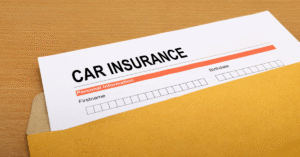Obtaining G2 insurance in Ontario requires specific documentation. This article examines essential papers, identification requirements, proof of residency, previous license records, expired document implications, and electronic versus physical submission procedures. Familiarizing yourself with these requirements will help you be better equipped to secure the right coverage for your vehicle.
List Essential Documents Required for G2 Insurance
Drivers holding a G2 license in Ontario must provide essential documents when applying for car insurance. These typically include a valid G2 license, proof of completion of an approved driver’s education course, and a clean driving record. Insurance providers like Aviva Canada also require proof of address and vehicle ownership or lease agreement to process applications and determine auto insurance rates.
Additional documentation may include previous insurance policies, if applicable, and a completed OAP1 car insurance policy application form. Drivers holding a G2 license should be prepared to provide information about their vehicle‘s make, model, and year, as well as details about any aftermarket modifications or depreciation factors that could affect coverage. Insurance brokers in Ontario can guide applicants through the specific requirements of different providers to ensure a smooth application process.
Review Identification Requirements for Applicants
G2 insurance applicants in Ontario must provide government-issued photo identification, such as a valid driver’s license or passport, to verify their identity. Insurance providers also require proof of ID and date of birth, which are essential factors in determining premiums. Customers applying for coverage in Etobicoke for example must ensure their identification documents are current and match the information on their application forms.
Business owners seeking G2 insurance for commercial vehicles may need to provide additional identification, such as business registration documents. Insurance companies use these identification requirements to assess risk factors, including the applicant’s driving experience and potential exposure to high-traffic areas. Proper identification also helps insurers verify the applicant’s eligibility to operate specific vehicle types, such as those with specialized wheels or modifications.
Check Proof of Residency Needed for Insurance Applications
Drivers with a G2 license applying for insurance in Ontario must provide proof of residency to verify their address and establish their eligibility for coverage. This can be done with and up to date Driver’s License showing the current address the policyholder resides at.
Proof of residency helps insurers assess risk factors associated with the applicant’s location, such as local speed limits and traffic patterns. Drivers holding a G2 license who have recently moved or obtained their license may need to provide additional documentation to confirm their current address. Insurance companies use this information to accurately calculate premiums and ensure compliance with provincial regulations regarding coverage for new drivers.
Explore the Necessity of Previous Driver’s License Records
Previous driver’s license records play an important role in G2 insurance applications in Ontario. Insurance providers use these records to assess an applicant’s driving history and potential risk factors. Drivers with a G2 license may be required to provide documentation of their G1 license period, including any infractions or suspensions, to help insurers accurately evaluate their risk profile and determine appropriate premium rates.
For drivers holding a G2 license with out-of-province license histories, insurance companies may require additional documentation to verify their driving experience. This information helps insurers consider factors such as graduated licensing programs from other jurisdictions when calculating discounts for G2 coverage. By examining previous license records, insurance providers can offer more tailored policies that reflect a G2 driver’s actual experience and potential risk on Ontario roads.
Assess the Impact of Expired Documents on Application
Expired documents can significantly impact G2 insurance applications in Ontario. Insurance providers require up-to-date documentation to process applications accurately and assess risk. Drivers holding a G2 license who have expired licenses or outdated proof of address may face delays in obtaining coverage, see higher premiums or even application rejection.
To avoid complications, drivers should ensure all required documents are current before applying for insurance. Insurance brokers recommend renewing expired documents promptly and keeping records of renewal dates. This proactive approach helps drivers maintain continuous coverage and potentially qualify for better rates based on their driving history and location.
Investigate Electronic Versus Physical Documentation Procedures
Insurance providers in Ontario offer both electronic and physical documentation procedures for G2 insurance applications. Electronic submissions streamline the process, allowing applicants to upload scanned copies of their G2 license, proof of address, and other required documents through secure online portals. This method expedites the application process and reduces paperwork for both applicants and insurance companies.
While electronic submissions are increasingly common, some insurance providers still require physical documentation for G2 insurance applications. Applicants may need to present original documents in person or mail copies to the insurance company. This approach allows insurers to verify document authenticity directly, which can be particularly important for new drivers holding a G2 license with limited driving history.
Clarify Steps to Apply for G2 Car Insurance in Ontario
Applying for G2 car insurance in Ontario involves several key steps. This section outlines the process of gathering necessary documentation, choosing an insurance provider, completing application forms accurately, reviewing policy details, finalizing the policy after approval, and managing insurance once activated. Understanding these steps helps drivers navigate the insurance application process efficiently and secure appropriate coverage.
How to Gather Necessary Documentation for Application
Drivers holding a G2 license in Ontario must gather essential documentation for their insurance application, including a valid G2 license, proof of address, and vehicle registration. They should obtain a driver’s abstract from the Ministry of Transportation, which outlines their driving history and any infractions. Insurance providers may also require proof of completion of an approved driver’s education course to assess eligibility for potential discounts.
For those who have held insurance previously, obtaining a letter of experience from their former insurer can be beneficial. G2 drivers should also prepare their vehicle‘s make, model, and VIN number, as these details are crucial for accurate insurance quotes.
Tips for Choosing the Right Insurance Provider
Drivers holding a G2 license in Ontario should choose to work with a broker who can compare quotes from multiple insurance providers to find the best coverage and rates. They can use online comparison tools or consult with the insurance broker to evaluate options from various companies. It’s essential to consider factors beyond price, such as customer service ratings, claim process efficiency, and available discounts for new drivers.
When selecting an insurance provider, Drivers holding a G2 license should inquire about specific policies tailored to new drivers and any potential savings for completing additional driver training. They should also review the provider’s financial stability and reputation for handling claims promptly. Choosing a provider with a strong presence in Ontario can ensure familiarity with local driving conditions and regulations.
How to Accurately Fill Out Insurance Application Forms
Accurately filling out G2 car insurance application forms in Ontario requires attention to detail and honesty. Applicants should provide complete and truthful information about their driving history, including any accidents or tickets. They must ensure all personal details, such as name, address, and contact information, are correct and match their official documents.
Drivers should carefully review each section of the application form, paying special attention to questions about vehicle usage and annual mileage estimates. It’s crucial to disclose any modifications made to the vehicle and list all potential drivers who may operate the car. If unsure about any questions, applicants should seek clarification from their insurance provider to avoid errors that could affect their coverage.
The Importance of Reviewing Policy Details Thoroughly
Thoroughly reviewing policy details is crucial for drivers holding a G2 license in Ontario to ensure they understand their coverage and obligations. They should carefully examine the policy‘s limits, deductibles, and any exclusions that may affect their protection. This review helps G2 drivers identify potential gaps in coverage and make informed decisions about additional options or higher limits if needed.
Drivers holding a G2 license should pay close attention to specific terms related to new drivers, such as restrictions on vehicle usage or requirements for maintaining a clean driving record. Understanding these details can help them comply with policy conditions and avoid potential issues when filing claims. It’s advisable for drivers to seek clarification from their insurance provider on any unclear terms to ensure they fully comprehend their policy‘s scope and limitations.
How to Finalize Your Insurance Policy After Approval
After receiving approval for their G2 car insurance in Ontario, drivers should carefully review the final policy document provided by their insurer. They need to confirm that all details, including coverage limits, deductibles, and personal information, match the agreed-upon terms. Drivers holding a G2 license should pay special attention to any endorsements or riders that may have been added to their policy.
To finalize the insurance policy, drivers holding a G2 license must sign all necessary documents and submit payment for their premium. Many Ontario insurers offer flexible payment options, including monthly installments or annual lump sums. Once payment is processed and all paperwork is complete, the insurer will issue proof of insurance, which G2 drivers must keep in their vehicle at all times while operating a vehicle on the road.
Tips for Managing Your Insurance Once Activated
Drivers holding a G2 license in Ontario should regularly review their insurance policies to ensure they maintain adequate coverage as their driving habits and needs evolve. They should promptly inform their insurer of any changes in their circumstances, such as address updates or vehicle modifications, to keep their policy accurate and valid. Maintaining a clean driving record is crucial for drivers holding a G2 license to avoid premium increases and potentially qualify for safe driver discounts.
It’s advisable for drivers to set reminders for policy renewal dates and explore options for bundling insurance products to maximize savings. They should also consider participating in telematics programs offered by many Ontario insurers, which can lead to personalized rates based on their actual driving behaviour. Drivers holding a G2 license should keep detailed records of any incidents or claims to facilitate smooth communication with their insurance provider when necessary.
Understanding the necessary documents for G2 car insurance in Ontario can simplify your application process and help you avoid delays. Ensuring you have all required paperwork, like identification, proof of residency, and a clean driving record, will make securing the right coverage much easier.
If you need assistance for getting your car insurance or have any questions, don’t hesitate to give us a call, book a meeting or fill out the contact form below. We’re here to help you every step of the way!
request a quick auto quote Book a meeting with a brokerYes
No
Somewhat




